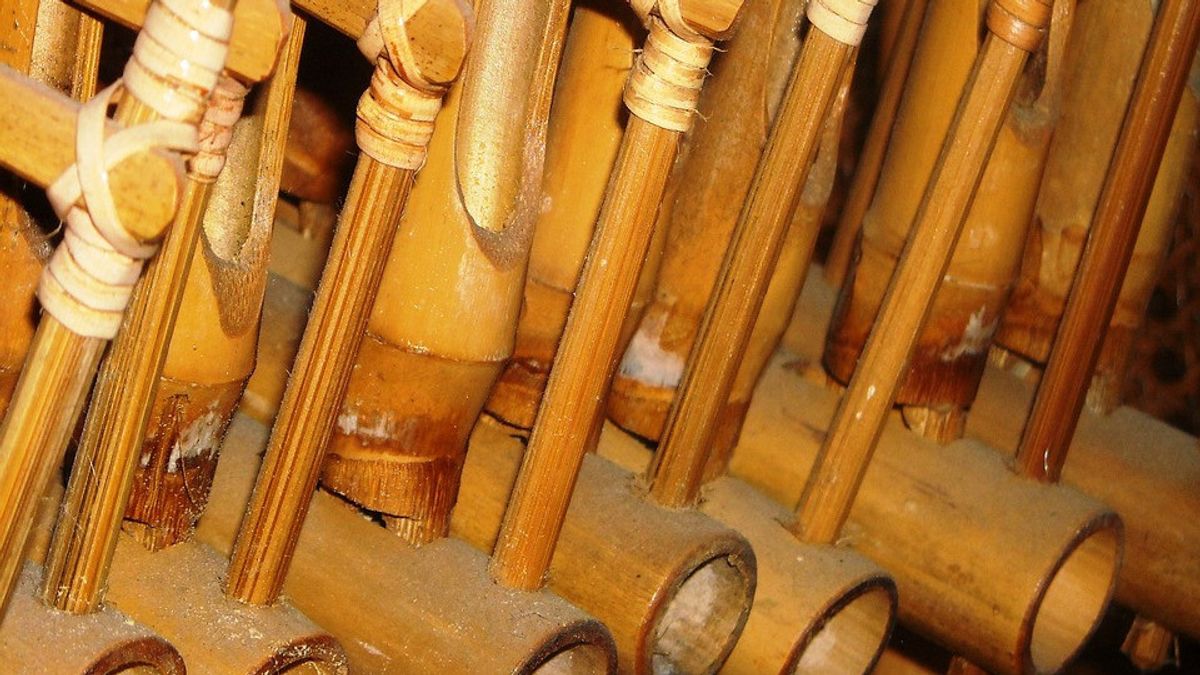
YOGYAKARTA Sundanese musical instrument is one of the cultural resources that needs to be preserved in the midst of times.
Please note, the Sundanese, which incidentally is the majority of the population in West Java Province, has created various distinctive traditional musical instruments.
So, what traditional musical instruments come from Tanah Sundanese?
Compiled by VOI from various sources, Thursday, December 1, 2022, here are various types of Sundanese musical instruments and how to play them:
Quoted from the official website of the Ministry of Education and Culture, karinding is a traditional Sundanese art tool in the form of small channels that utilize oral cavity resonators to produce echoing sounds.
The source of the carinding sound comes from the strength of the oral cavity with minimal breath.
The way to play this Sundanese musical instrument is by attaching the center in front of the mouth that is slightly open. Then, the bat part on the right is flicked with the finger until the needle vibrates. It is the vibration that produces the sound that is arranged depending on the shape of the oral cavity, the depth of the resonance and the lid open the concavity or gusts and breaths.
You could say, sngklung is Sundanese's most popular musical instrument. The popularity of angklung has even reached abroad.
Many Indonesian music groups have played angklung on the international stage. One of them is Saung Angklung Udjo who appears on the Katara stage, Doha, Qatar to entertain football lovers during the 2022 World Cup.
Quoted from the Informatics Journal Number 2 Volume 4 of the May-August 2013 edition, angklung is played by shaking, so that angklung will produce a sound. The sound in the angklung appears because the bamboo angklung collides with each other. The sound resulting from the bamboo collision forms a tone arrangement.
This one Sundanese instrument is similar to angklung. A shadow made of bamboo is usually played together with angklung, resulting in a typical Tanah Sundanese rhythm.
Calung is played by hitting the wilahan (batang) of bamboo tube sections arranged according to the pentatonic barrel (da-mi-na-ti-la tone door).
Kecapi is a picking instrument from Sundanese. Based on its function, it is divided into two, namely the mother's wife and the child's husband.
The mother's cap has 18-20 strings that play a role in starting music and determining the tempo. Meanwhile, the child's taste serves to accompany the music and only has 15 strings.
In Harry Sulastianto et al's book Art and Culture, your voice is picked. The bottom is pressed so that it produces a new sound or the entire wire is sounded simultaneously (from top down or vice versa) by using a jitter. Next, the wires are beaten with rubber beats.
The Suling is a Sundanese musical instrument made of bamboo perforated with a certain distance to adjust the tone. The number of holes in the distillation varies from four holes to eight holes.
The Suling is played by blowing at one end, while closing several other holes in Java to produce the desired tone.
The next traditional Sundanese musical instrument is tarawangsa. This traditional musical instrument has two strings made of steel or iron wire.
Tarawangsa is played by swiping the strings. Currently, the art of tarawangsa is practiced in various celebration events, celebrations, and national major events.
That's the information about Sundanese musical instruments. Hopefully useful!
The English, Chinese, Japanese, Arabic, and French versions are automatically generated by the AI. So there may still be inaccuracies in translating, please always see Indonesian as our main language. (system supported by DigitalSiber.id)











